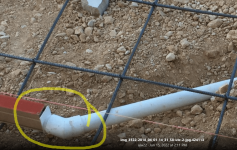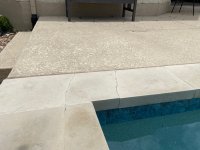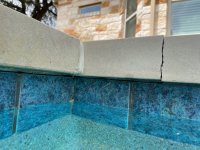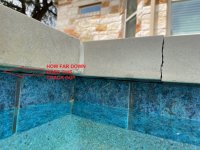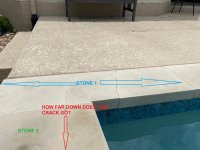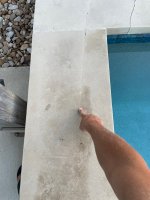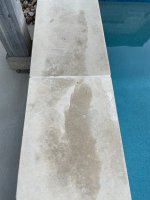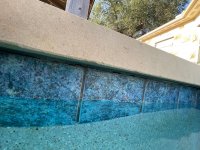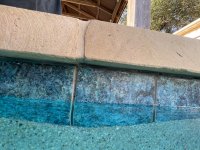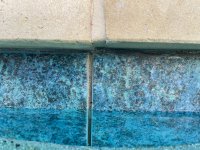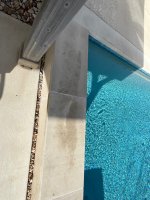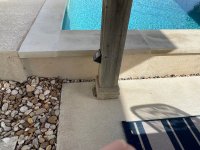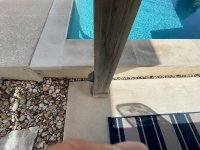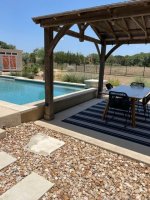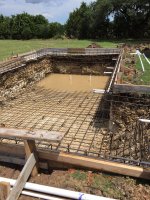Bill1974
Well-known member
- Jun 18, 2014
- 675
- Pool Size
- 32000
- Surface
- Vinyl
- Chlorine
- Salt Water Generator
- SWG Type
- CircuPool RJ-60 Plus
I have never used a liner drain, so I don't know much about them. But the end doesn't seem right to me and I don't see that glue on any of the pipes joints. If this is leaking water into the soil all the time, it could be the reason for the ground movement. This is right by the area of the cracking. Maybe the pipe got knocked off in the concrete pour.
